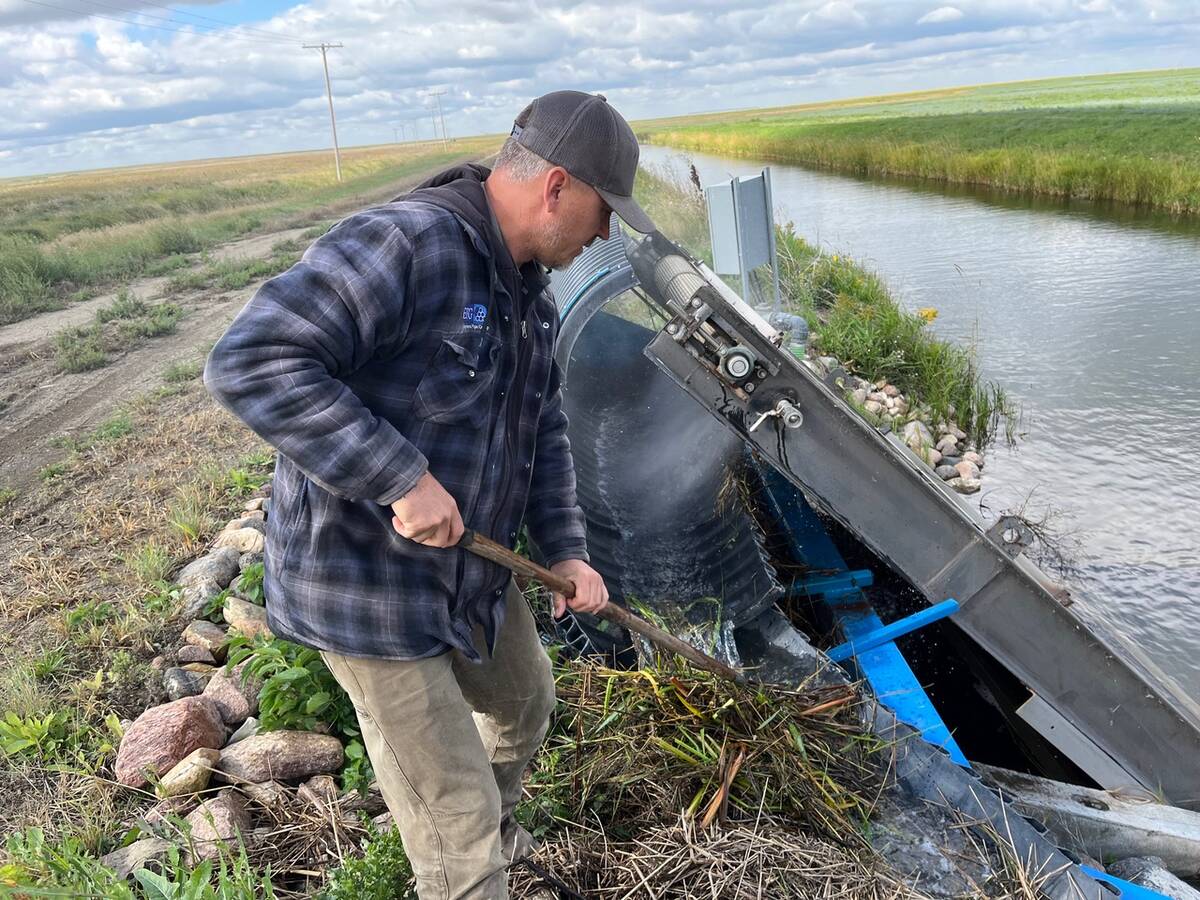SALTCOATS, Sask. – Gypsy horses and mud don’t mix.
This summer’s weather has been a challenge for Holly Penner as she tries to keep her horses’ distinctive feet looking fine.
“It’s all about the hair, the feathering,” she said.
Gypsy horses have been described as people-sized draft horses and as Golden Retrievers with hoofs, referring to their feathery feet and gentle dispositions.
Penner once took one of her horses into the house on Prairie Thunder Ranch near Saltcoats to see how it would behave. The experiment went well.
Read Also

Saskatchewan farmer uses tile drainage to manage water
The integration of both irrigation and tile drainage results in higher yields, water efficiency, improved soils and less nutrient runoff, says one producer.
She and husband, Nathan, say they are the first and only breeders of Gypsy horses in Saskatchewan.
Also known as Gypsy Vanner horses, the breed was developed by gypsies to pull their caravans and has Friesian, Shire, Dales Pony, Clydesdale and Fell in its pedigree. The horses had to be gentle and easy to keep because the children cared for them and played around them.
The breed’s characteristics include manes that hang below the shoulder, tails that drag on the ground and feet that appear to be floating.
Although the horses have been around for centuries, they were “discovered” in 1994 in England and Ireland and have become highly sought after.
Their temperament and size make them suitable for riding, driving, dressage and for use by people with disabilities.
In 1996 the breed came to North America, when 14 mares and two stallions were imported to the United States. There are still fewer than 3,000 in the United States and about 60 in Canada.
Penner imported three pregnant mares from Ireland in February 2007 and is building a herd through a carefully planned combination of live breeding and artificial insemination.
The response has been overwhelming. She said her horses stole the show when she took them to the recent Mane Event in Red Deer for exhibition purposes.
“I could not get from the barn to the show ring without being swamped.”
The horses had never been shown before. Penner said she plucked some of them from the pasture and took them to Red Deer, where their floating feet caught everyone’s attention.
“The crowd went crazy,” she said.
“We were the centre of attention.”
Because the breed is not well known, Penner is relying on her website and local horse events to show off her horses. She doesn’t intend to show, however. Her goal is to breed and sell.
Prairie Thunder horses are registered in the American breed registry, which has strict size regulations.
The horses must be purebred and stand between 14.1 and 15.2 hands. Penner said her mares are about as big as they get.
“We’d like to stay purebred at this time because the circle of buyers is smaller,” she said.
It’s also more lucrative.
The price the Penners paid for each of their mares has doubled in the last 18 months.
Cross-breeding would lower those returns and result in less feathering around the horses’ feet, she added. The Penners took an expensive risk when they bought their horses over the internet without ever seeing them live.
The horses spent two weeks in quarantine in Alberta before heading to their new home.
The Penners also raise Quarter horses, which they use as surrogates, as well as Morgans and Paints. Next year, the family, which includes daughter, Jasmine, hopes to attend the Appleby Horse Fair in northern England, a renowned Gypsy horse market.
“I want to see where my horses came from,” Penner said.
For more information, visit www.prairiethundergypsys.com.

















